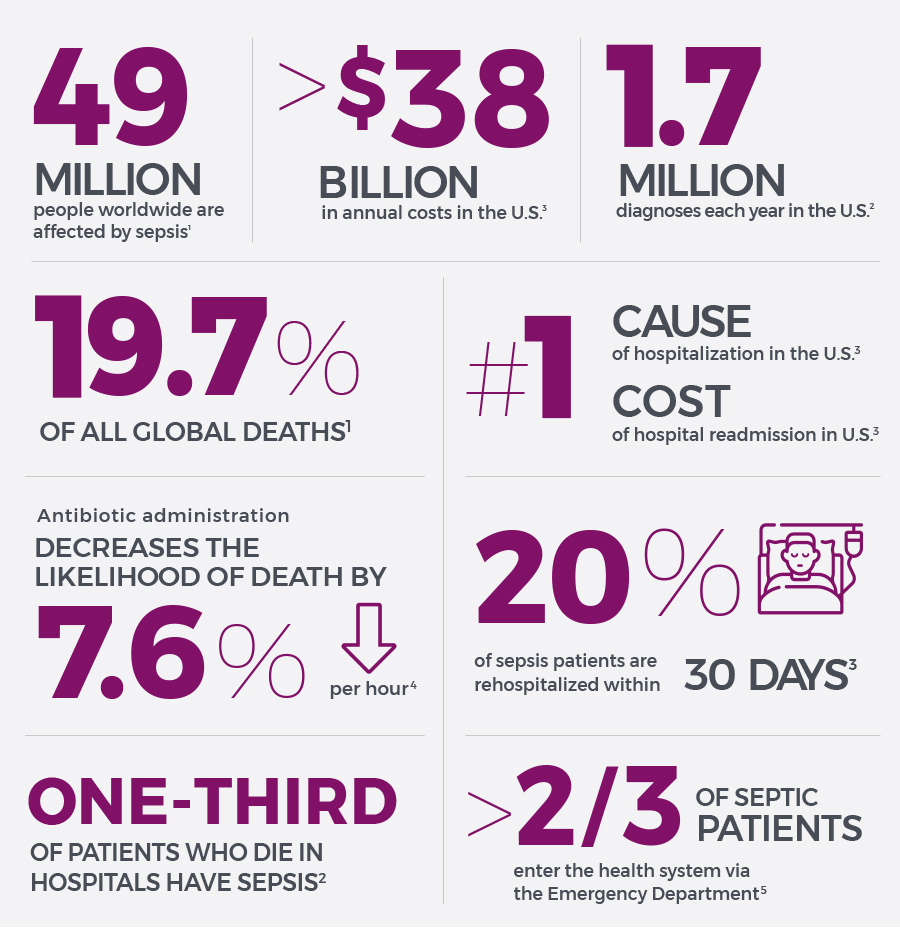- Published on
Sepsis-- Signs, Stats, and Facts
- Authors
- Name
- Wayne Shih
- Role
- Content Writer
Though sepsis can be fatal, if caught early, its effects can be mitigated. Therefore, noting certain symptoms to spot early onset is essential to improve the outcomes of patients. Hence, we partake in advocacy as spreading the word about early onset sepsis symptoms can be potentially life-saving. Here are some of those symptoms:
Changes in mental status (particularly growing confusion and disorientation)
Low blood pressure
Feeling of coldness
High respiratory rates (>22 per minute)
Very high or low body temperatures
Once sepsis further develops into septic shock, the symptoms increase in severity. Septic shock is characterized by a severe drop in blood pressure accompanying organ failure. Symptoms indicative of septic shock include:
Drastically dropping blood pressure
High levels of lactic acid in the blood
Every year, nearly 1.7 million adults develop sepsis in the United States alone. As it is rather widespread and can be fatal, any early indication should be promptly followed with immediate professional attention. Further highlighting the importance of early intervention, sepsis has an alarming 30-40% mortality rate, and survivors of severe sepsis are at higher risk for future infections. Sepsis is also the primary cause of readmission to hospitals due to improperly treated infections. The mortality rate of sepsis only increases as it progresses. Those with septic shock have a 40-80% mortality rate. The treatment of sepsis is extremely time sensitive with the chance of sepsis progressing to severe sepsis and septic shock rising by 4-9% every hour treatment is delayed.
There are many misconceptions related to sepsis. For one, sepsis does not have to occur in a hospital environment. In fact, over 80% of sepsis cases occur outside of the hospital. Another misconception is that sepsis is rare. Worldwide, there are nearly 50 million cases, and it can occur in anyone with an infection. When discussing sepsis, it is important to differentiate between true and false or misconstrued notions as creating an aware, educated, and open society is essential in early identification of sepsis.
